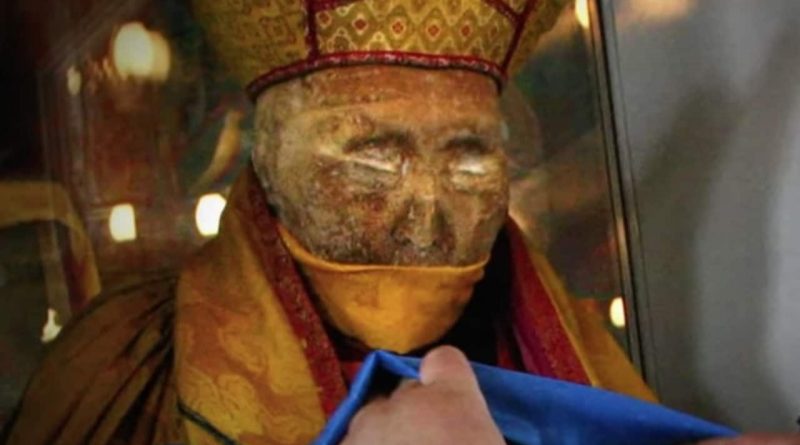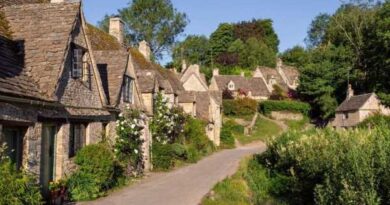Japan’s mummified monk temples are world’s creepiest tourist attraction
When you think of travelling to Japan, you probably picture yourself slurping ramen, visiting a Hello Kitty cafe, snapping pics of Mount Fuji and loudly singing karaoke.
What you may not have added to your itinerary is visiting the mummified bodies of the sokushinbutsu. But amend that bucket list, kids, because this could be one of the world’s strangest tourist attractions, and it will certainly give you some like-generating Instagram content.
There are 16 mummified “sokushinbutsu” monks that you can visit in temples in northern Japan. The monks were followers of shugendō – an ancient form of Buddhism – and they died in “the ultimate act of self-denial”.
While many people in the modern age don’t have the attention span to finish watching a ten-minute YouTube clip, the focus and dedication these monks showed is truly off the charts. Strap in, because this is going to blow your mind …
Mummified monks of Japan have shocked the world. Picture: History ChannelSource:Supplied
According to Atlas Obscura, “For three years, the priests would eat a special diet consisting only of nuts and seeds, while taking part in a regimen of rigorous physical activity that stripped them of their body fat.
“They then ate only bark and roots for another three years and began drinking a poisonous tea made from the sap of the urushi tree, normally used to lacquer bowls (its bark contains the same toxic compound that makes poison ivy so poisonous).
“This caused vomiting and a rapid loss of bodily fluids, and – most importantly – it killed off any maggots and parasites that might cause the body to decay after death.”
Mummified monks of Japan. Picture: History ChannelSource:Supplied
At the completion of a thousand-day (THREE YEAR!) cycle on this diet, practitioners were considered spiritually ready to enter the next phase. However, most monks completed two or even three cycles until they felt fully prepared (one monk spent an incredible 20 years on the regimen).
Upon completing their final cycle, the monk would cut out all food, drink a limited amount of salinized water for a hundred days, and otherwise meditate upon the salvation of mankind while waiting to die.
As the monk felt death approaching, his disciples would lower him into a pine box at the bottom of a pit three metres deep. They would then bury him alive, packing charcoal around the box. The monk would not move, meditating in the lotus position in the pitch black.
His only connection to the outside world was a thin bamboo air tube, and a bell. He rang the bell each day to let those outside know he was still alive. When the bell stopped ringing, the tube was removed and the tomb sealed.
Mummified monks of Japan. Picture: History ChannelSource:Supplied
The next bit is truly heartbreaking. Unfortunately not all monks who attempted the process were successful.
As Atlas Obscura continues: “When the tombs were finally opened after a period of time, some bodies were found to have rotted. These monks were resealed in their tombs. They were respected for their endurance, but they were not worshipped.
“Those monks who had succeeded in mummifying themselves were raised to the status of Buddha, put on display, and tended to by their followers.”
Let’s just take a moment to spare a thought for all the monks who went through that horrific process and didn’t quite attain Buddha status.
The big question here is why the heck would anyone choose to go out this way?
Apparently these gents were attempting to copy a ninth-century monk named Kūkai, who founded a particular school of Buddhism.
In the 11th century, a biography of Kūkai appeared claiming that upon his death the monk did not die at all, but crawled into his tomb and entered a state of meditation so deep it induced “suspended animation”.
The monks who did decompose were respected for their endurance, but they were not worshipped. Picture: History ChannelSource:Supplied
According to the writings, Kūkai will emerge in 5.67 million years to usher souls into nirvana. So fundamentally, the aim is to cheat death to enter a state of eternal meditation.
The Japanese government banned the self-mummification practice in the late 19th century, declaring it barbaric and backwards. But apparently it continued on the down-low into the 20th century (a monk named Bukkai died attempting sokushinbutsu in 1903).
Although roughly 28 of these sokushinbutsu remain, only 16 of them can be visited by tourists. The most famous is Shinnyokai Shonin of the Dainichi-Boo Temple on Mount Yudono. The majority of the monks who underwent self-mummification did so near this particularly holy temple.
It has been shown that a local spring had high levels of arsenic, and this may have helped the monks in the mummification process. Others can be found in Nangakuji Temple, in the suburbs of Tsuruoka, and at Kaikoji Temple in Sakata.
trending in travel
Source: Read Full Article








